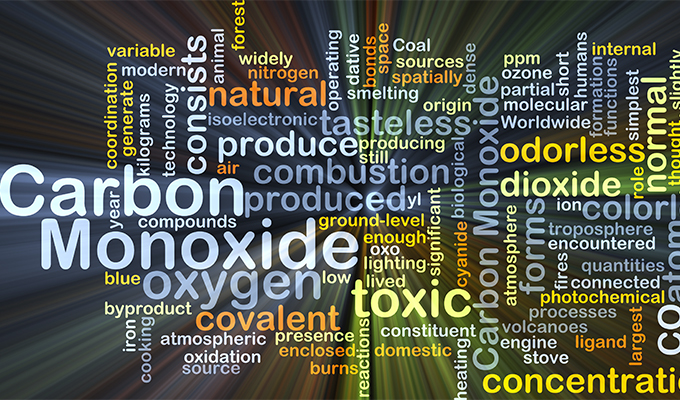Safety experts often refer to carbon monoxide as the silent killer. This gas is odorless and tasteless, meaning you may not know you were exposed until symptoms develop. However, even the signs of poisoning may present as the onset of a flu-like illness, leading people to delay seeking treatment until it is too late. Sleeping and unconscious individuals can die.
Unfortunately, this gas poses a severe risk to job locations, particularly indoor ones. What should you do to reduce the risks to your crew? Here’s what you need to know about carbon monoxide prevention on the construction site.
COMMON SOURCES OF CARBON MONOXIDE AT JOBSITES
The biggest carbon monoxide threat to worker safety occurs when working indoors. Think about running a car in an enclosed garage—starting gas-powered construction equipment immediately raises interior levels.
Problems often start with generator location. It’s crucial to keep these units outdoors, however convenient it may be to have them closer to the equipment. All fuel-burning equipment emits some carbon monoxide, including any construction tools powered by propane or gasoline.
It’s crucial to perform proper maintenance on your gear. For example, an inadequately maintained gas engine may emit 12 times as many toxic fumes as one that’s well-tuned.
Please don’t confuse the term “indoor” for meaning “within a fully completed building.” Carbon monoxide poisoning can also occur in partially constructed areas enclosed with plastic or tarps.
SAFETY MEASURES FOR CARBON MONOXIDE
The best way to prevent carbon monoxide hazards on jobsites is to ensure adequate ventilation throughout the workspace. However, it isn’t sufficient to open a window. This gas often collects in pockets, which is why you should never pull your barbecue grill into the garage, even if you leave the door open.
Carbon monoxide is slightly lighter than air, meaning it concentrates in upper areas that your nasal passages also occupy, upping the danger.
You should employ continuous forced-air ventilation that provides positive pressure to the place workers occupy to comply with OSHA standards. In small areas, a portable blower fan may suffice. Larger regions require multiple exhaust fans and blowers to direct clean air from the outdoors into the space while decreasing hazards within the location.
Remember, carbon monoxide is naturally odorless and tasteless; you can’t rely on health symptoms alone to alert you to potential trouble. Instead, you should provide detectors to workers on your jobsite to monitor levels.
Train your workforce to place these devices at least five feet above floor level in any enclosed or partially enclosed areas. Unlike ceiling-mounted units, the detectors used by crews often take the form of wands. You can even find keychain units, which are useful if you tackle many smaller jobs as a contractor.
TREATING CARBON MONOXIDE EXPOSURE
Accidents happen and crews should know what to do in the case of accidental exposure. Understanding how carbon monoxide kills will help.
This gas enters your red blood cells more quickly than oxygen. Your body’s cells rely on oxygen to survive, meaning your brain and other organs don’t get enough of it when carbon monoxide takes over. Carbon monoxide poisoning hospitalizes over 4,000 people a year and kills 400.
Therefore, you should immediately call 911 if you suspect you or a crew member were accidentally exposed to excessive carbon monoxide levels. Paramedics will transport you to the hospital, where you will breathe pure oxygen until you offset the toxic gas buildup in your blood.
Please don’t avoid treatment, since one can suffer lingering impacts like organ damage if one fails to return one’s body to homeostasis.
CARBON MONOXIDE PREVENTION
Crews who typically labor in the open air have to take extra precautions on interior remodels. Operating the wrong equipment without adequate ventilation can result in toxic carbon monoxide poisoning.
Understanding carbon monoxide prevention on the construction site helps keep your crew safer. Train your employees about the importance of adequate safety measures and contact emergency services if you suspect accidental overexposure.
About the Author
Jane Marsh is an environmental and green technology writer who covers topics in sustainable construction and green building materials. She also works as the editor-in-chief of Environment.co.


